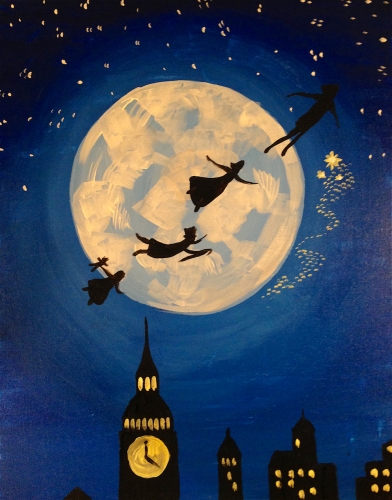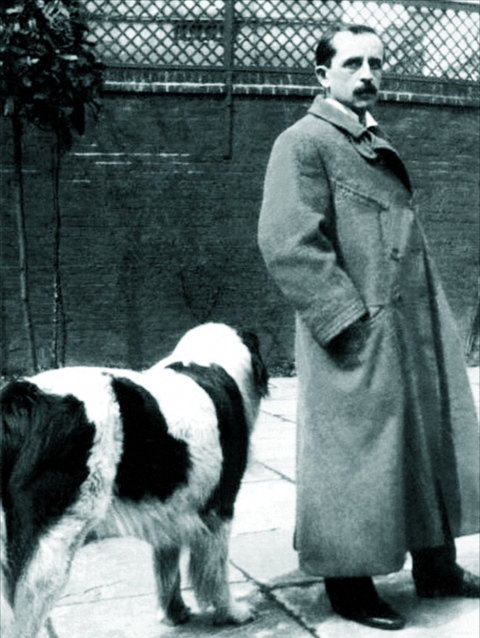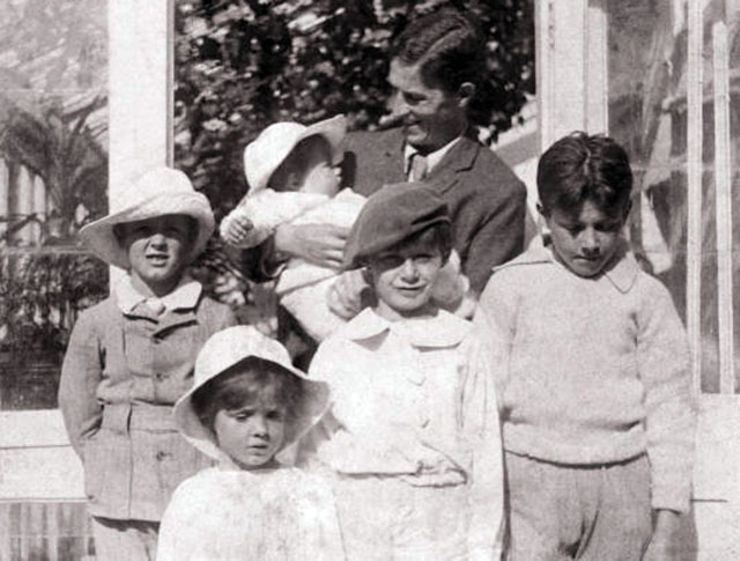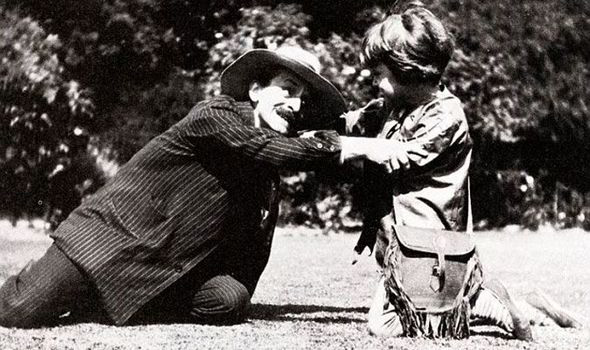“Life is a long lesson in humility.”
Would you imagine that the person who wrote this somewhat jarring quote above also once wrote,
“‘Wendy,’ Peter Pan continued in a voice that no woman has ever yet been able to resist, ‘Wendy, one girl is more use than twenty boys.'”?
Well you might be surprised to find out that indeed it was the very same author. J.M. Barrie was a man of many talents (not least of which being so obviously a feminist before his time)!

James Matthew Barrie was born on May 9th, 1860, the ninth of ten children born to Margaret Ogilvy and David Barrie, a weaver in Kirriemuir, Scotland. James had a happy childhood until he was 6, when his elder brother died in a skating accident just before his 14th birthday. His mother was confined to her bedroom for months on end, ill with grief. Barrie tried to cheer her up by dressing in David’s clothes and walking around as him. Though by doing so he scared his mother out of her wits, their relationship was eventually strengthened by it. For the next couple years, before James was sent away to school, he and his mother shared a love of literature – reading aloud works like Pilgrim’s Progress, Robinson Crusoe, and poems by Walter Scott.
Throughout his youth Barrie remained a voracious reader – and even formed a drama group with his friends during his teenage years. He left school wanting to become an author, and despite pressure from his family to join the religious order, he was able to attend university and study literature! After graduating the University of Edinburgh he worked for over a year as a journalist at the Nottingham Journal, and then returned home to his mother in Kirriemuir and began writing her childhood stories into a series eventually named “Thrums”. The editor of the St. James’s Gazette in London liked the series so much that he commissioned and published these stories. Though now not Barrie’s most popular work, these stories made him a well-known figure in the literary world and allowed him to begin writing plays – as he wanted.
 Barrie wrote several successful plays (and a couple flukes), but his third script brought him into contact with a young actress of the day – Mary Ansell – who would later, in 1894, become Barrie’s wife. For their union Barrie gifted Mary a St. Bernard puppy – who would become the inspiration for “Nana” in later years. They settled in London but kept a country home in Farnham, Surrey. In 1897 Barrie became acquainted with a nearby family – the Llewelyn Davies family. Barrie spent most of his free time with the family – and despite this relationship being depicted in movies and tv these days, it was a bit different than we see! Barrie met the family when the father Arthur was still alive, and was there for the five sons through the death of their father and eventually their mother, prematurely. Around this time Barrie unfortunately found his 10-year marriage falling apart. Amid rumors that their marriage was never consummated, Barrie’s wife took a lover twenty years her junior – Gilbert Cannan – an acquaintance of Barrie’s through theatrical politics. Barrie and Ansell’s marriage ended in divorce, though Barrie continued to support Mary throughout her subsequent marriage to Cannan and for the rest of her life.
Barrie wrote several successful plays (and a couple flukes), but his third script brought him into contact with a young actress of the day – Mary Ansell – who would later, in 1894, become Barrie’s wife. For their union Barrie gifted Mary a St. Bernard puppy – who would become the inspiration for “Nana” in later years. They settled in London but kept a country home in Farnham, Surrey. In 1897 Barrie became acquainted with a nearby family – the Llewelyn Davies family. Barrie spent most of his free time with the family – and despite this relationship being depicted in movies and tv these days, it was a bit different than we see! Barrie met the family when the father Arthur was still alive, and was there for the five sons through the death of their father and eventually their mother, prematurely. Around this time Barrie unfortunately found his 10-year marriage falling apart. Amid rumors that their marriage was never consummated, Barrie’s wife took a lover twenty years her junior – Gilbert Cannan – an acquaintance of Barrie’s through theatrical politics. Barrie and Ansell’s marriage ended in divorce, though Barrie continued to support Mary throughout her subsequent marriage to Cannan and for the rest of her life.
 Inspired largely by the stories he told to the Llewelyn Davies family, Barrie began to formulate a story of a boy who wouldn’t grow up, who flew around and had adventures. Not unlike Charles Dodgson’s Alice a century before, Barrie began to write his story into a play and once debuted in 1904, the play Peter Pan; or the Boy Who Wouldn’t Grow Up was an immediate success. George Bernard Shaw said of the performance, “ostensibly a holiday entertainment for children, but really a play for grown-up people” – a wonderful description of the meanings and metaphors found in Peter Pan. Though children may see the adventure story on the outside, the adults in the audience could see what was really at play (pun intended) – Barrie’s social commentary on the adult’s fear of time and growing old and losing their childish innocence and fun, to name just a few.
Inspired largely by the stories he told to the Llewelyn Davies family, Barrie began to formulate a story of a boy who wouldn’t grow up, who flew around and had adventures. Not unlike Charles Dodgson’s Alice a century before, Barrie began to write his story into a play and once debuted in 1904, the play Peter Pan; or the Boy Who Wouldn’t Grow Up was an immediate success. George Bernard Shaw said of the performance, “ostensibly a holiday entertainment for children, but really a play for grown-up people” – a wonderful description of the meanings and metaphors found in Peter Pan. Though children may see the adventure story on the outside, the adults in the audience could see what was really at play (pun intended) – Barrie’s social commentary on the adult’s fear of time and growing old and losing their childish innocence and fun, to name just a few.
After Sylvia’s death in 1910, she named Barrie as co-guardian of the boys, along with her mother. Barrie remained close to the boys all their lives (though tragically two of the elder sons died young and Barrie seemed to suffer the trauma of losing a child). In 1911 Barrie wrote the novel Peter and Wendy as a follow up to the play, and in 1929 he donated all the proceeds from Peter Pan to the Great Ormond Street Children’s Hospital in London – which the hospital still holds to this day.

Barrie continued to write several plays until his death in 1937 – though to hear the names of them, you wouldn’t think to associate them with the author of Peter Pan! Titles like Pantaloon (1905), Half an Hour (1913), A Kiss for Cinderella (1916), Shakespeare’s Legacy (1916), Mary Rose (1920), Cricket (1926), and The Boy David (1936) are some of the few that stand out, but are among dozens. He passed away in 1937 at the age of 77 from pneumonia in a London nursing home.
To the author of (arguably) the most beloved children’s story of all time (that wasn’t really intended for children), we have one thing to say to you on your birthday…
we hope that second star to the right is everything you imagined for all of us!

